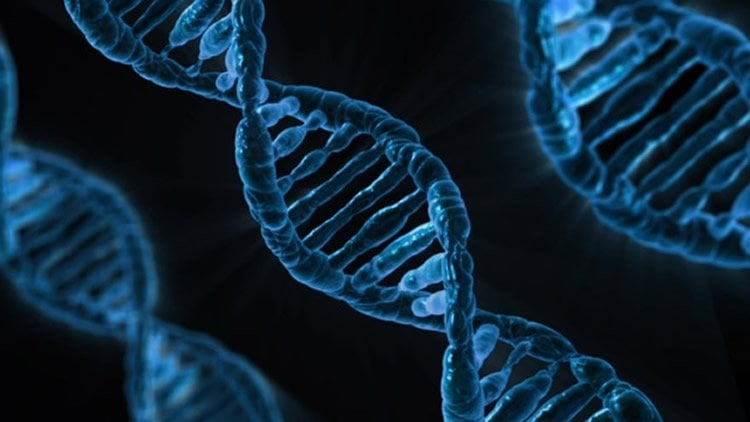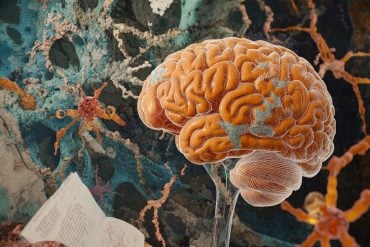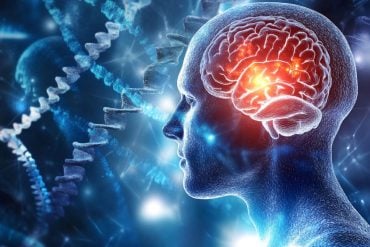The research shows the precise cellular mechanisms that lead to the disorder and how an existing drug might help thousands of people with autism.
Last December, researchers identified more than 1,000 gene mutations in individuals with autism, but how these mutations increased risk for autism was unclear. Now, UNC School of Medicine researchers are the first to show how one of these mutations disables a molecular switch in one of these genes and causes autism.
Published today in the journal Cell, the research shows that an enzyme called UBE3A can be switched off when a phosphate molecule is tacked onto UBE3A. In neurons and during normal brain development, this switch can be turned off and on, leading to tight regulation of UBE3A. But a research team led by Mark Zylka, PhD, associate professor of cell biology and physiology, found that an autism-linked mutation destroys this regulatory switch. Destruction of the switch creates an enzyme that cannot be turned off. As a result, UBE3A becomes hyperactive and drives abnormal brain development and autism.
“Genetic studies are showing that there will be about 1,000 genes linked to autism. This means you could mutate any one of them and get the disorder. We found how one of these mutations works,” said Zylka, senior author of the Cell paper and member of the UNC Neuroscience Center.
The work was done in human cell lines, as well as mouse models.
Because this one autism-linked UBE3A mutation was part of the Simons Simplex Collection – and Zylka previously had been funded through a Simons Foundation grant – he had access to the cells that were used to find this one mutation. When Jason Yi, PhD, a postdoctoral fellow in Zylka’s lab, sequenced the genes from the cell samples – including cells from the child’s parents – he found that the parents had no hyperactive UBE3A but the child did.
The child’s regulatory switch was broken, causing UBE3A to be perpetually switched on.
“When this child’s mutation was introduced into an animal model, we saw all these dendritic spines form on the neurons,” said, Zylka, who is also a member of the Carolina Institute for Developmental Disabilities. “We thought this was a big deal because too many dendritic spines have been linked to autism.”
Their findings thus pointed to hyperactivation of UBE3A as the likely cause of this child’s autism.
It was previously thought that too much UBE3A might cause autism because duplication of the 15q chromosome region – which encompasses UBE3A and several other genes – is one of the most commonly seen genetic alterations in people with autism. This is called Dup15q Syndrome.
As part of their study, Zylka and Yi found that protein kinase A (PKA) is the enzyme that tacks the phosphate group onto UBE3A. This finding has therapeutic implications, particularly since drugs exist to control PKA.
“We think it may be possible to tamp down UBE3A in Dup15q patients to restore normal levels of enzyme activity in the brain,” Zylka said. “In fact, we tested known compounds and showed that two of them substantially reduced UBE3A activity in neurons.”
One of the drugs, rolipram, previously had been tested in clinical trials to treat depression but was discontinued due to side effects. One of the symptoms associated with Dup15q syndrome is sudden unexpected death in epilepsy. In light of these life-threatening seizures, Zylka pointed out that it may be worth examining whether lower doses of rolipram, or other drugs that increase PKA activity, provide some symptom relief in Dup15q individuals. “The benefits might outweigh the risks,” he said.

Future work with an animal model of Dup15q could be used to test this therapeutic approach.
While the bulk of this project was focused on autism, this project began when Zylka and Yi noticed that a large number of Angelman syndrome-linked mutations were clustered in the same chromosome region where the phosphate group was tacked onto UBE3A. Angelman syndrome is a rare neurological disorder characterized by developmental delay, seizures, balance problems, and lack of speech.
Zylka’s team found that a number of the Angelman mutations disrupt the function or stability of UBE3A. These mutations would essentially eliminate the enzyme in people with Angelman syndrome. This discovery could have implications for diagnosing people with this rare and often misdiagnosed disorder.
Other co-authors included Ben Philpot, PhD, professor of cell biology and physiology, William Snider, MD, director of the UNC Neuroscience Center, and Klaus Hahn, PhD, the Ronald Thurman Distinguished Professor of Pharmacology. Janet Berrios, a graduate student at UNC, and Jason Newbern, PhD, assistant professor in the School of Life Sciences at Arizona State University, are also co-authors.
Funding: The National Institutes of Health, the Angelman Syndrome Foundation, The Foundation for Angelman Syndrome Therapeutics, and Autism Speaks funded this work.
Source: Mark Derewicz – UNC
Image Credit: The image is in the public domain
Original Research: Abstract for “An Autism-Linked Mutation Disables Phosphorylation Control of UBE3A” by Jason J. Yi, Janet Berrios, Jason M. Newbern, William D. Snider, Benjamin D. Philpot, Klaus M. Hahn, and Mark J. Zylka in Cell. Published online August 6 2015 doi:10.1016/j.cell.2015.06.045
Abstract
An Autism-Linked Mutation Disables Phosphorylation Control of UBE3A
Highlights
•PKA phosphorylates UBE3A at T485 and inhibits UBE3A ubiquitin ligase activity
•Autism-linked UBE3A T485A missense mutation disrupts phosphorylation regulation
•The T485A mutation hyperactivates UBE3A and increases synapse formation in vivo
Summary
Deletion of UBE3A causes the neurodevelopmental disorder Angelman syndrome (AS), while duplication or triplication of UBE3A is linked to autism. These genetic findings suggest that the ubiquitin ligase activity of UBE3A must be tightly maintained to promote normal brain development. Here, we found that protein kinase A (PKA) phosphorylates UBE3A in a region outside of the catalytic domain at residue T485 and inhibits UBE3A activity toward itself and other substrates. A de novo autism-linked missense mutation disrupts this phosphorylation site, causing enhanced UBE3A activity in vitro, enhanced substrate turnover in patient-derived cells, and excessive dendritic spine development in the brain. Our study identifies PKA as an upstream regulator of UBE3A activity and shows that an autism-linked mutation disrupts this phosphorylation control. Moreover, our findings implicate excessive UBE3A activity and the resulting synaptic dysfunction to autism pathogenesis.
“An Autism-Linked Mutation Disables Phosphorylation Control of UBE3A” by Jason J. Yi, Janet Berrios, Jason M. Newbern, William D. Snider, Benjamin D. Philpot, Klaus M. Hahn, and Mark J. Zylka in Cell. Published online August 6 2015 doi:10.1016/j.cell.2015.06.045






